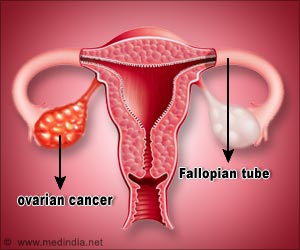Each year around 7,300 women are diagnosed with ovarian cancer and long-term survival remains just 35 percent.

‘Giving immunotherapy treatments right after chemotherapy activates T cells to target the ovarian cancer cells more effectively by blocking PD-L1 that stops T cells from recognizing and destroying tumor cells.’





But they found that this also had a drawback. While the chemotherapy activated T cells it also boosted the cancer's defenses against immune attack - cancers had higher levels of a protein called PD-L1 that stops T cells from recognizing and destroying cancer cells. The research findings suggest that drugs that boost the immune system would be most effective if given after chemotherapy and the most effective immunotherapy treatments will have to block the PD-L1 protein to allow T cells to target the tumor most effectively.
Lead author Professor Frances Balkwill, based at the Barts Cancer Institute at Queen Mary University of London, said: "Our study suggests that to give patients the best results not only do the immunotherapy drugs need to be given straight after chemotherapy but they also have to able to block PD-L1. Clinical trials are now needed to test this theory. This same approach could also be extended to other kinds of cancer where the same types of chemotherapy are used, such as lung cancer."
The study also revealed that women who did not respond well to chemotherapy still had increased levels of T cells suggesting that this type of immunotherapy could help treat all patients whether or not they had responded to chemotherapy.
Each year around 7,300 women are diagnosed with ovarian cancer and long term survival remains just 35 percent.
Advertisement
Advertisement













